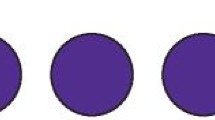Abstract
Data sources
The Cochrane Oral Health Group Trials Register, Cochrane Central Register of Controlled Trials, Medline, PubMed and Embase databases were searched. The reference lists in relevant papers were checked.
Study selection
Studies chosen were randomised controlled trials and controlled clinical trials that compared minimal (ultraconservative) caries removal with complete caries removal in unrestored permanent and deciduous teeth.
Data extraction and synthesis
Outcome measures recorded were exposure of the nerve of the tooth (pulp) during caries removal, patient experience of symptoms of pulpal inflammation or necrosis, progression of caries under the filling, and time until the filling was lost or replaced. Because of the heterogeneity of the included studies, the overall estimate of effect was calculated using a random-effects model.
Results
Four studies met the inclusion criteria, comprising two stepwise excavation studies and two ultraconservative caries removal studies. Partial caries removal in symptomless, primary or permanent teeth reduces the risk of pulp exposure. No detriment to the patient was found in terms of pulpal symptoms in this procedure and there was no reported premature loss or deterioration of the restoration.
Conclusions
Partial caries removal in symptomless, primary or permanent teeth reduces the risk of pulp exposure. We found no detriment to the patient in terms of pulpal symptoms in this procedure. Therefore, partial caries removal is preferable to complete caries removal in the deep lesions in order to reduce the risk of carious exposure. There is insufficient evidence, however, to know whether it is necessary to re-enter and excavate further — although studies that have not re-entered do not report adverse consequences.
Similar content being viewed by others
Commentary
The origin of this systematic review is the propositions by John Tomes, in 1859, that it would be better to leave some carious tissues in a cavity in order to maintain the pulp vitality and by GV Black, in 1908, that is preferable to expose the pulp of a tooth than to leave it covered only with softened dentine.1 Since then, dentists have followed Black's approach, removing all suspicious dentine (soft, black or dark-coloured). When our clinical instructors asked, we answered, “I have removed all the caries”! It is easy to recognise when the walls of the cavity are clean, but it is harder to define what is meant by “partial”: did we remove caries just in the walls? Just in the enamel–dentin junction? Or just leave it all? The intervention (ie, caries removal) in this review is not clear as noted by the authors, who explained, “we do not know whether the amount of caries removal is relevant in terms of symptoms”.
The authors looked for the appropriate papers and included relevant research. They did not apply language restrictions in his search although it should be noted that the databases used may themselves bias in favour of English-language publications.
The authors found the methodological quality of the included papers to be “questionable”. They report the results for the pulp exposure, symptoms of pulpal inflammation and restoration survival and found no evidence from these four papers that classical caries removal is better than partial. These results must be extrapolated very carefully to the clinical setting because patients would require more visits to monitor the symptoms or in stepwise procedure.
The authors did not discuss others harms or costs of the interventions such as, for example, the use of different restorative materials or medicaments in the cavity. At the moment, just one study is registered at the clinicaltrials.gov website (Bjørndal L, Reit C. The CAP-1 trial: stepwise excavation versus one completed excavation in deep caries NCT00187837. www.clinicaltrials.gov/ct/show/NCT00187837?order=2>) and that just for the stepwise intervention. In terms of evidence, there is no evidence base to affirm that the entire carious lesion must be removed, but we do not know how much can we leave or which material is best suited for partial caries removal. What is clear is that the surgical management of caries is, at best, only a symptomatic treatment. Caries is driven by the biofilm at the surface of the teeth, an intangible process not amenable to surgical removal:2 this review shows how irrelevant the removal may be of tissues involved in the carious process. I welcome this review and I hope that it will avoid many unnecessary endodontic treatments of deep carious lesions.
Practice point
Partial caries removal appears preferable to complete caries removal in deep lesions to reduce the risk of carious exposure.
References
Bjorndal L . Buonocore Memorial Lecture. Dentin caries: progression and clinical management. Oper Dent 2002; 27:211–217.
Warren J . Coming to terms with terminology. Oper Dent 1997; 23:49.
Author information
Authors and Affiliations
Additional information
Address for correspondence: Luisa M Fernandez Mauleffinch, Cochrane Oral Health Group, MANDEC, School of Dentistry, University of Manchester, Higher Cambridge Street, Manchester M15 6FH, UK.
Ricketts DNJ, Kidd EAM, Innes N, Clarkson J. Complete or ultraconservative removal of decayed tissue in unfilled teeth. Cochrane Database of Systematic Reviews 2006; issue 3
Rights and permissions
About this article
Cite this article
Uribe, S. Partial caries removal in symptomless teeth reduces the risk of pulp exposure. Evid Based Dent 7, 94 (2006). https://doi.org/10.1038/sj.ebd.6400444
Published:
Issue Date:
DOI: https://doi.org/10.1038/sj.ebd.6400444



